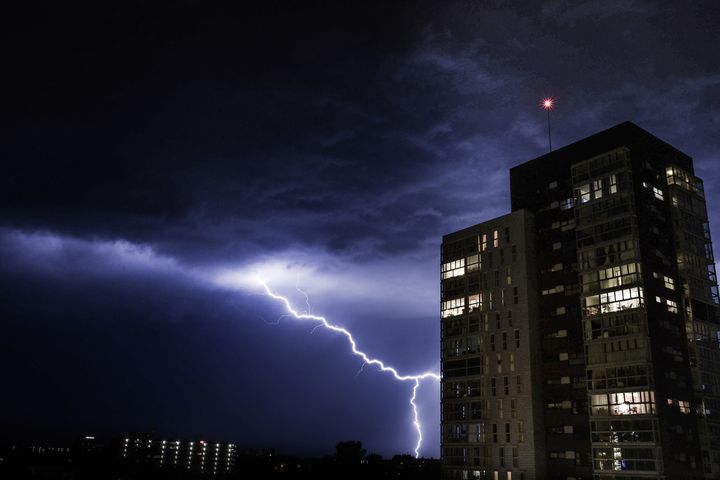
Image courtesy of Pixabay.com
In late September, the city of Cedar Rapids, Iowa, was hit by the worst flooding it had experienced since 2008. Thousands of area residents had to leave, and many businesses shut down to prepare for the worst-case scenario.
Unlike the 2008 deluge, preparations for the recent flood were largely effective. Preparation efforts helped minimize the damage and allowed many Cedar Rapids residents to get back to business much more rapidly than initially expected.
Many places have not been so lucky. In March, Mississippi experienced severe flooding that caused massive damage and widespread power outages for homes and businesses. To help Mississippians get back on their feet, the Federal Deposit Insurance Corp. encouraged banks to “work constructively with borrowers experiencing difficulties beyond their control.” The FDIC believed those efforts would “serve the long-term interests” of the banks.
In theory, the time immediately after a disaster is when banks can make themselves most useful. By providing citizens with the funds they need — through loans or other means — banks play an integral part in recovery efforts and can foster goodwill in the process.
Unfortunately, many banks opt to preemptively close branches in areas where storms and floods hit, assuming potential outages could force them to shut down anyway. Rather than pay employees who have nothing to do during this downtime, banks assume closing everything down ahead of time is more cost-effective. They similarly rely on TV and app-based weather forecasts that lack the sort of accuracy and location-specific detail necessary to make such an important decision.
While it’s prudent to take precautions to mitigate potential losses, this overly cautious attitude could inflict serious damage on a business’s bottom line and cause more headaches than it’s designed to prevent while missing the opportunity to truly serve its clients and community.
Ripple Effects
It’s important to remember that shutting down a store affects more than a single location: The entire business, its customers, and its suppliers are all involved in some way. A hasty shutdown can lock clients out of critical services or overburden other nearby locations that remain open.
Closures also can leave vendors in the lurch, stuck with stock they are unable to move. The price of such an inconvenience can be minimal for some businesses, but it’s a costly nightmare for banks that routinely welcome armored vehicles full of cash.
Even if the extra cost were not a factor, businesses must notify vendors early to avoid stranding delivery drivers in the same inclement weather that caused the closure. An impulsive decision to close without all of the facts could be seriously detrimental — and in some cases dangerous — to other parts of the supply chain.
Preparing for the Worst
While there are plenty of reasons to carefully consider any decision to close, none of this is meant to say bank officials should never shutter in the face of inclement weather. Rather, executives should take several key steps to minimize costs and keep their branches open for business as long as possible.
1. Prevent damage to your building and people. No one wants customers or employees to suffer any injuries, but you should take extra care in the run-up to a potential outage. Proper precautions will ensure you keep people safe while removing the possibility of lawsuits or having to pay out workers’ compensation. At the same time, these steps will help minimize inconvenience to employees, customers, and vendors.
Meanwhile, easy and effective measures such as boarding up windows before a hurricane and having some tools and equipment on hand to help with cleanup and basic repairs can help protect your building itself. These simple acts are financially prudent and can significantly reduce recovery time.
It’s also a good idea to take preventive steps to keep your branch in business and ensure it can open on time. For example, you might consider contracting with a snow-removal crew before a blizzard hits or, better yet, before the snow season starts. In addition to saving you from a business outage, it could actually help lure a greater number of customers through your doors (and your snow-free parking lot).
2. Step up your weather game. When you’re planning for the worst, look beyond your local TV meteorologist. Consider investing in a commercial weather forecast service that will allow you to isolate conditions on a location-by-location basis. This will allow you to be more efficient in deciding which locations you want to close, which you should shore up, and — just as important — when it’s safe to reopen.
Consider a scenario with two banks in a community — one in the flood zone, the other along the evacuation route. Proper intel would help you decide to prepare the latter for additional business. The location in the flood zone most likely will have to close at some point, but there is no reason to waste time preparing both facilities for the same conditions.
A more detailed weather forecast also can tell you when a location needs to close, when it is in real danger of significant damage, and when it can safely remain open. This sort of specificity helps avoid an inefficient, one-size-fits-all approach that leads to unnecessary closures and waste.
3. Get ready to work through an outage. Don’t focus solely on loss. Instead, consider what you can gain by maintaining near-normal business operations in a disaster zone when competitors are unable to support their clientele.
Look no further than brands such as The Home Depot, Waffle House, Whataburger, and H-E-B Grocery to see how they function and serve their clients in disaster zones after devastating weather events.
Preparing to stay open during an extended outage can be costly — but consider the alternative. You could just as easily damage client relations or lose the ability to serve customers altogether. When financial institutions can maintain somewhat normal operations during a time of crisis, this spells good news for customers. You can strongly reinforce brand loyalty among customers whose financial needs likely are more pressing than normal.
Closures are likely to happen regardless of your preparation, but they don’t have to be so commonplace or long-lasting. By relying on a professional weather service and taking the proper precautions ahead of time, you can stay open for business even when your competitors are closing up shop. Your customers will likely appreciate you being there for them when they need you most.
Don Shelly is the Director of Sales—North America for StormGeo. He has over 25 years of experience in delivering custom-designed solutions for clients in a variety of business sectors. The breadth of his experience in understanding the challenges faced by companies and the importance of having effective risk mitigation solutions backed by timely decision guidance resources has resulted in clients being well-equipped to mitigate weather-induced business disruptions and maintain profitability.
